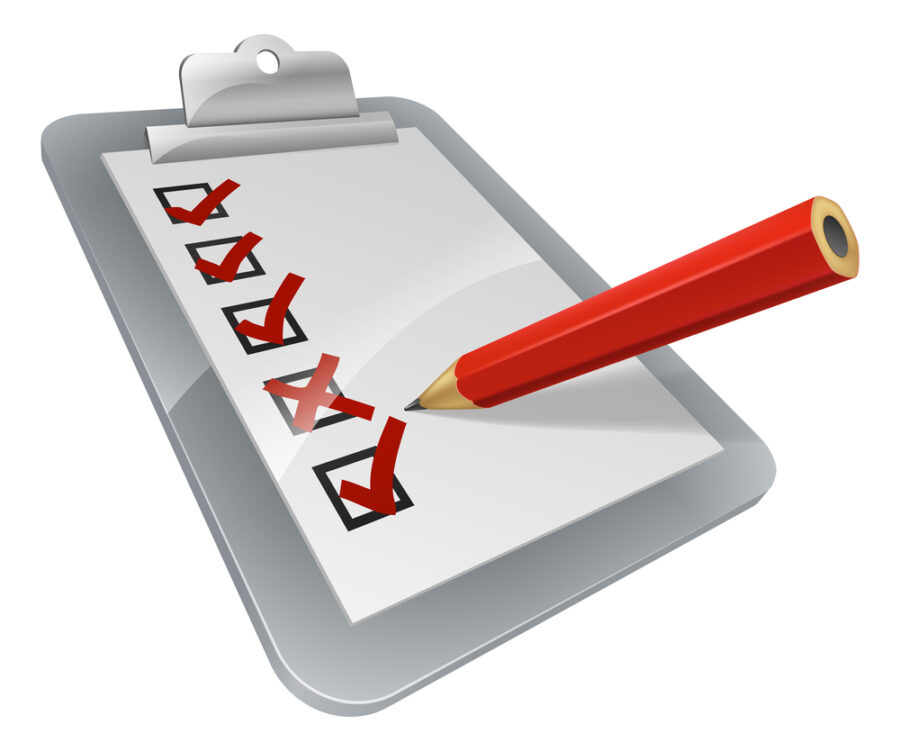A Pre-Trip Inspection is a great way to review the status of your truck and trailer. A thorough Pre-Trip Inspection is at least ten minutes long and covers almost every aspect of the truck, from the headlights to the brake lights.
This is also a great time to check your Bill of Ladings to make sure your reefer temperature is at the correct temperature.
The DOT guide states that you must perform at least a ten-minute long Pre-Trip Inspection and must reflect that in your ELD.
Spending a mere ten minutes to make sure that your entire truck is safe to be operated makes Pre-Trip Inspection the cheapest insurance policy you can buy. If performed properly, you should never receive a citation from a Department Of Transportation (DOT) officer and you should notice and address anything that could lead to your vehicle causing an accident.
But how is a DOT officer or your company supposed to know that you not only completed your Pre-Trip Inspection but also noted if there were or were not any issues that you found? That is where the DVIR steps in.
What is a DVIR
DVIR stands for Driver Vehicle Inspection Report and is the very vital other half of a Pre-Trip Inspection.
Your findings during your Pre-Trip Inspection will dictate when you should complete your DVIR and what should be noted.
If nothing has been found during your Pre-Trip Inspection, then you may start driving and enjoy your shift. At the end of your shift, you will need to complete a DVIR stating that nothing was found. Very simple and takes almost no time at all.
However, if you are unsure if an item you found counts as a reportable issue on your DVIR, complete your Pre-Trip Inspection and certify that you have completed the ten-minute Pre-Trip Inspection on your ELD, then call your Maintenance Department and notify them of the issue. Your Maintenance Department will notify you if what you found is a reportable issue or not and they will proceed to tell you what to do.
If your Maintenance Department tells you that the issue you found is a DOT reportable problem, go ahead and report the issue on your DVIR. Do NOT begin driving, the issues must be handled. Maintenance will outline your next steps of what you should do and how you should do it.
If you know for a fact what you found is a DOT reportable problem, finish your Pre-Trip Inspection and notate the issues found and complete your DVIR. Do NOT begin driving, the issues must be handled. Call your Maintenance Department for instructions on getting the issues remedied right away.
How are they similar?
Pre-Trip Inspections and DVIRs are routinely confused with one another and it is very easy to see why that can happen; they are two sides of the same inspection coin.
The biggest reason for the confusion is that both need to be completed in your ELD. Simply taking a picture of the log of Pre-Trip Inspections is not a DVIR. It is required that you complete your DVIR in your ELD.
But it really helps to highlight how they are different requirements.
How are they different?
The easiest way to think about it is that the Pre-Trip Inspection is the act of inspecting and the DVIR is the certification that you performed the inspection.
Pre-Trip Inspections are always performed first and the DVIR is always performed second, no matter what.
Finding nothing means that your DVIR will be completed at the end of your shift, rather than the start of your shift.
If something is found, then you will be required to call your Maintenance Department and follow up the issue up immediately after your Pre-Trip Inspection.
Which leads to the next biggest question: what is and is not reportable on a DVIR?
What should be on your DVIR
You should note that if anything interferes with the safe operation of your vehicle that you should note it on your DVIR and that you will be shut down and cannot advance your load until the problem is fixed. By no means is this a comprehensive list but it does cover many common items that should be reported on a DVIR.
Tire Malfunctions
Any sort of tire issue that you run into flat tires, missing tires, overinflated tires, or bald tires will need to be listed on your DVIR and a call to your Maintenance Department to fill them in on the issue will need to be completed so they can fix the problem.
If you are performing a proper Pre-Trip Inspection every day, you should always be aware of the state of your tires and be able to trip plan accordingly.
Visibility Impairment
Anything that affects your ability to see out of the windshield is a DOT-reportable problem and should be addressed immediately. This includes, but is not limited to shattered windshields, discolored windshields, and missing or malfunctioning wiper blades.
Damaged Lights
If there is even a single light that is not on or is malfunctioning in some way, that is a problem that needs to be reported immediately and marked in your DVIR. If your headlights, turn signals, brake lights, and even reflectors are damaged in any way, they need to be fixed or else you will be receiving a DOT citation and a hit to your CSA score, not to mention throwing your delivery ETA way off.
What should not be on your DVIR?
There is a never-ending list of items that are not required to be reported on your DVIR. Basically, you should never report anything that does not impede the safe operation of your vehicle.
Items that do not count as DVIR reportable are items that are not DOT related. This includes, but is not limited to:
Interior Lights Not Working
While every single exterior light should be functional, interior lights are not required to be functional for the safe operation of your truck. Lights like your dome light inside your truck or your refrigerator light. These are certainly irritating and should be addressed with your Maintenance Department, but they do not need to be reported on your DVIR.
Missing Personal Items
Items like toiletries or missing bedding will never impede your truck’s safe operation. It is far more effective to wait for a break or a reset to replace these items.
Malfunctioning Reefer Unit
An item that often appears on a DVIR when it does not need to be reported is a malfunctioning Reefer Unit. While they are vital when driving some loads, they never stop you from driving your truck safely. It is recommended that you call your Maintenance Department to assist you if you notice your Reefer Unit is not operating.
Items like these should be brought to the attention of your Maintenance Department during their working hours.
Never forget that if you put any items on your DVIR that the DOT does not require you to note, you will be forced to waste precious Hours of Service until that issue is resolved.
Hopefully, this guide will help clear any confusion you have regarding your Pre-Trip Inspection and DVIR. If you have any other questions regarding these two, contact your Maintenance Department for further clarification.




